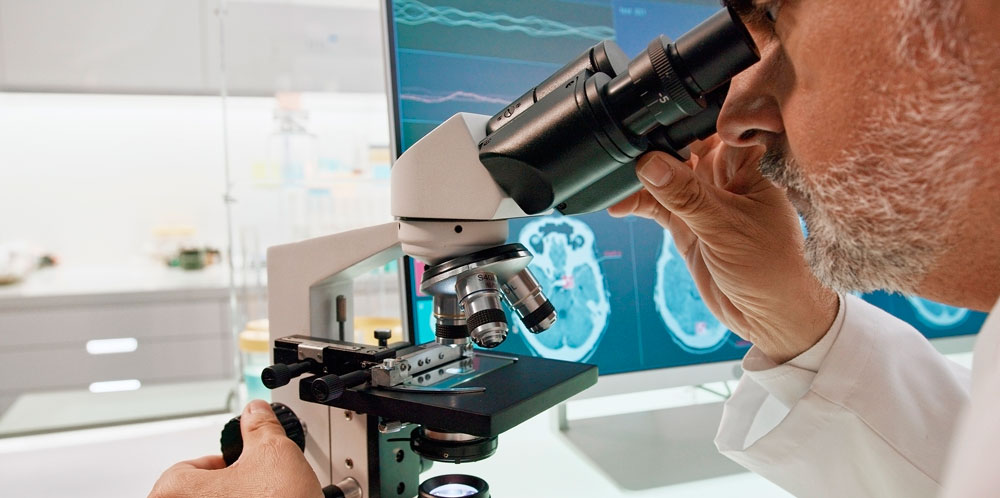Basic Research

There is a strong commitment within the Center to basic research regarding the underlying mechanisms of Alzheimer’s Disease and related disorders, and how this may translate into effective treatment.
The following basic research studies are underway:
Principal Investigator: Philip Wong, Ph.D.
The goal of this study is to characterize a new mouse model of Alzheimer’s disease that combines several of the co-occurring pathological features of the disease. These features include deposition of amyloid plaques, phosphorylated tau tangles and aggregates of TDP-43. One of the important features of this mouse model is that it demonstrates age-related neuron loss. A comprehensive set of molecular, pathological, neuronal circuit and behavioral/cognitive analyses are underway, in order to gain a fuller understanding of this model, so that is may be possible to use it to examine novel therapeutic approaches for AD.
For more information, please contact Dr. Philip Wong at [email protected].
Principal Investigator: Paul Worley, M.D.
This research program is examining a range of brain proteins that appear to be altered during the early phase of Alzheimer’s disease. This includes NPTX2, which mediates adaptive control of excitation/inhibition in brain circuits, mTORC1, which integrates cellular metabolism and controls processes including protein translation, mitochondrial function, and autophagy, and GDE2, which controls signaling mediated through the extracellular matrix and provides an index of cellular redox dynamics.
For more information please contact Dr. Paul Worley at [email protected].
Principal Investigator: Shanthini Sockanathan, Ph.D.
The goal of this study to examine the role of several transmembrane proteins in the processing of the amyloid precursor protein (APP). Several transmembrane proteins are under examination, including GDE2, RECK and ADAM10.
For more information please contact Dr. Shan Sockanathan at [email protected].
Principal Investigator: Michela Gallagher, Ph.D.
The goal of this study to examine the properties of the network that includes the entorhinal cortex/dentate gyrus and the CA3 region of the medial temporal lobe. Several aspects of this network are under examination, including the impact of sparse encoding. The primary goal is to examine relationship of alterations within this network to differences in episodic memory performance in age-unimpaired rodents, compared to those that are age-impaired.
For more information please contact Dr. Michela Gallagher at [email protected].
Principal Investigator: Juan Troncoso, M.D.
The goal of this study to examine the localization and dynamics of amyloid beta protein clearance in the brain tissue of young to middle age individuals. These studies utilize brain tissue from a large number of subjects ages 30-65, and will include an examination of the role of ApoE genotype on the deposition and perivascular clearance of pericapillary spaces.
For more information please contact Dr. Juan Troncoso at [email protected].
Principal Investigator: Michael Miller, Ph.D. & Juan Troncoso, M.D.
The goal of this study is to examine the correspondence between the distribution of Alzheimer’s disease pathological markers (i.e., plaques and tangles) as seen in neuropathologically prepared autopsy tissue, and the distribution of these changes assessed by high field magnetic resonance imaging scans of postmortem brain tissue.
For more information please contact Dr. Michael Miller at [email protected].
